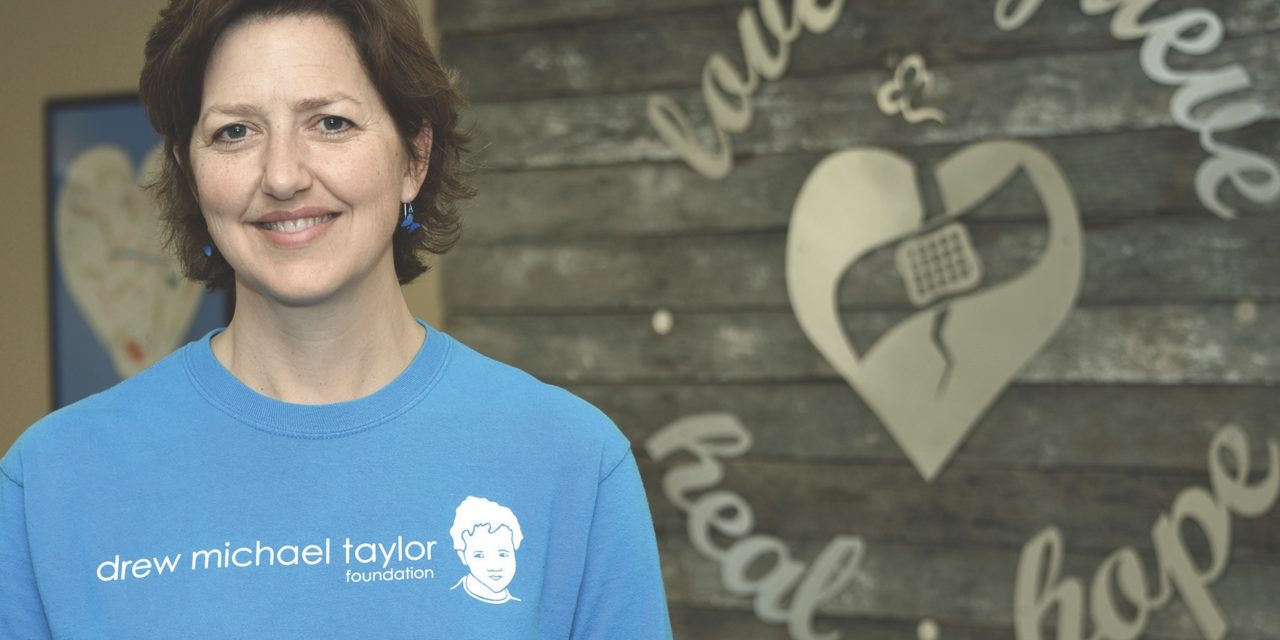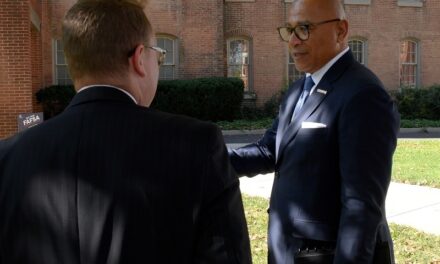Sometimes it’s the little things that make the most significant impact. Drew Michael Taylor was only three when a tragic auto accident in the Outer Banks, North Carolina, claimed his life in 2006. Just one year later, his parents, Marcie ’92-’97M and Randy ’93-’00M Taylor, sought to extend his impact on the world far beyond his three-and-a-half years, by creating a foundation in his name. The Taylors soon realized a dire need in their Shippensburg community for child and teen grief support and education—and Drew’s Hope was born.
Today, Drew’s Hope and the Drew Michael Taylor Foundation (DMTF) serve as a model for other small communities and organizations across the country. The foundation is a community resource for grief education and support when a child, teen, or adult is grieving the death of a loved one. Drew’s Hope, one of five support programs currently run by the foundation, offers support specifically designed for children and teens.
As members of the National Alliance for Grieving Children (NAGC), Marcie Taylor and several DMTF staffers attend the NAGC symposium each year to learn from grief centers around the country. While attending the symposiums, Taylor noticed a pattern. These robust, award-winning organizations told stories about hosting successful fundraising campaigns to back their multi-million-dollar budgets in major cities.
Taylor wasn’t in Denver or Orlando or Philadelphia. She begged and borrowed to get the resources she had. She was meeting a need in a small community that had no other resources. “That was not our reality. We were serving a vast area in a rural community.”
When she and SU Counseling Deparment graduates Allie Mahon and Bethany Gardner were invited to present at the symposium last year, they found the perfect opportunity to share the foundation’s narrative, challenges, and successes with other small organizations. As the first presenter on the first day last year, they received positive feedback and had plenty of interaction with other attendees after their discussion, “Small Town, Small Budget, Big Impact.”
For DMTF, the key was collaborating with Shippensburg University. “We are extremely blessed to live in a university town. We hope to inspire others who might not have a place,” she said. “If you’re not in a big town, and you don’t have a big budget, you can still do what we do.”
DMTF began in an effort to fill an immediate need. “My daughter was six when her brother died. She tried to talk about Drew, but her friends changed the subject,” Taylor said. “Just like we needed support, who does a kid talk to?”
After the accident, the Taylors found that the most appropriate organizations to support their daughter were in Lemoyne and York. They were told the south-central Pennsylvania area was a black hole for children’s grieving services.
“So we created the foundation,” Taylor said. “This was how we’d save the world in Drew’s name. And Drew’s Hope was a natural extension of that. We knew that grieving children in our area needed support that, at the time, was not being offered by anyone.”
Grief education and support was not in the Taylors’ wheelhouse. Both were teachers. But their determination to address the black hole for service helped them confront each challenge they faced. As a three-time grad of Shippensburg University, Marcie Taylor knew the university offered a wealth of resources to get them off the ground and running.
“As teachers, we needed to log so many hours. We thought, do counseling majors need hours? We need help creating this program, can they help us do it?”
In the fall of 2008, Drew’s Hope started as a small, seven-session grief support program on campus in Shippen Hall that worked within the semester timeframe. By the second session, they outgrew their space in Shippen and moved to the Grace B. Luhrs University Elementary School. The program always will have a place on campus, Taylor said, because of its flexible space, connection to the counseling and social work programs, and convenience for the community.
Taylor initially found help through SU counseling professors, Drs. Bill McHenry and Shirley Hess. Today, Dr. Marcy Douglass, associate professor of counseling and college student personnel, acts as the program liaison to the DMTF. Douglass steers students to volunteer hours with the foundation, which is a win-win for DMTF and the university. The foundation gets a solid volunteer force, while Ship students gain an incredible experience working with grieving families. Taylor also partners with social work students, offering volunteer hours for students who serve as grief buddies.
Many of these students stay connected to DMTF, continuing to volunteer after graduation. Two former student volunteers now work for DMTF. Others become local counselors, which Taylor can confidently refer families to for grief and loss counseling.
“We couldn’t do what we do without the collaboration of Shippensburg University,” she said. “I keep telling (small organizations) if you have a local university, reach out.”
Over nearly fifteen years, DMTF has continued to shift and expand to meet community needs. In the beginning, Taylor found she was receiving increased requests from adults to participate in Drew’s Hope—but the program was designed for children ages eighteen years and younger. “We’d have to refer them elsewhere,” she said.
So naturally, they developed and offered more adult support groups. DMTF has arts and crafts groups, teen weekend workshops, and programs for university students. Last year, Taylor organized a simple memorial ornament decorating event at the university CUB. With little time to advertise, she assumed the turnout would be low. To her surprise, two dozen students attended to design ornaments in memory of family members and pets.
One of the foundation’s most recent successes has been its Blue Butterfly Ball. “The blue butterfly is the symbol of children’s grief awareness,” Taylor said. As schools celebrate events like annual daddy daughter dances, the nontraditional family is overlooked. This event aims to change that.
“Daddy daughter dances are great—except when they’re not. For grieving families, like those served in our grief support programs, these relationship-specific events can be a huge grief trigger. The Butterfly Ball is our alternative to these type of events. Families should be celebrated in whatever way, shape, or form they are,” she said.
The event is meant to bring awareness to different family dynamics and celebrate whatever family structure children experience. This past year at The Orchards in Chambersburg, DMTF welcomed families to dance, play, and celebrate together. “We’re learning how to tell a family’s narrative.”
Taylor, Mahon, and Gardner were again invited to present at the NAGC symposium this year, and plan to share their programs with other organizations to show how these events can benefit small communities nationwide. They hope the symposium continues, but understand that, like events worldwide, the current COVID-19 pandemic might impact their plans.
In the meantime, Taylor has worked hard to deliver support to their families in new ways. They have used Zoom for their small group grief meetings, and Taylor has sent grief activity books and journals to Drew’s Hope families via Amazon so they can continue their grieving at home. Through all things, the message remains the same—big city or small, big budget or borrowed resources, these programs can meet those most in need in any community.
“Drew needed to make an impact in this world, and he needed to do that through us,” Taylor said. “In the midst of this tragedy, what an incredible blessing.”





